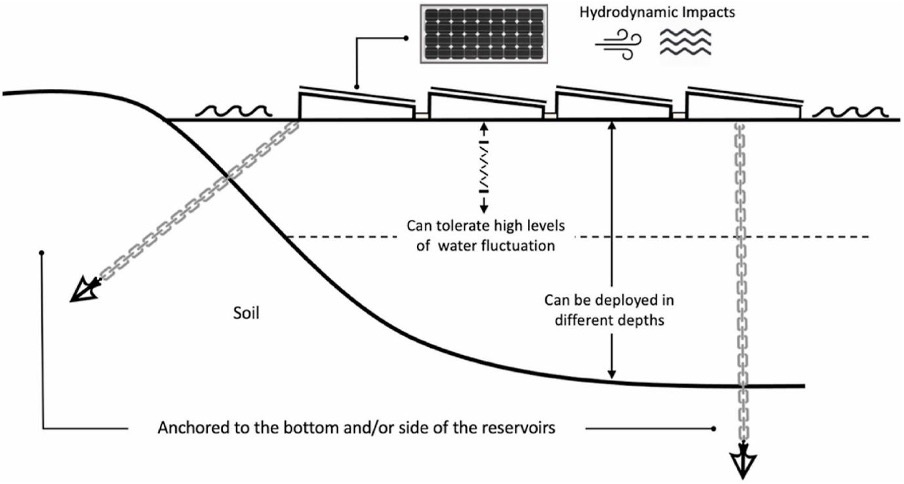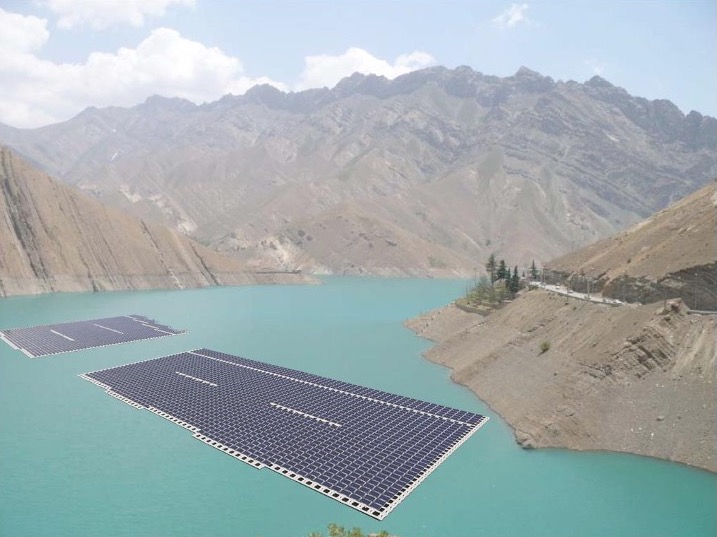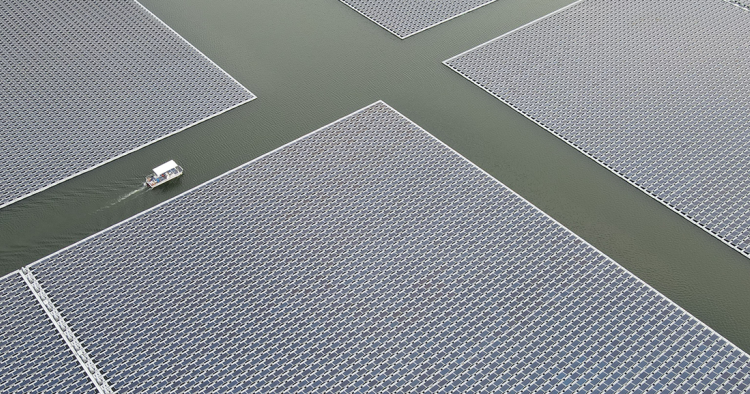The transition to clean energy in the Middle East
While a number of countries in the Middle East, especially in the Persian Gulf, have substantial oil and gas reserves, the abundance of these fossil fuels has caused overuse and unregulated consumption. Since burning these fuels is the main driver of global anthropogenic climate change, the Middle East is likely to be among the most affected regions. Its arid and semi-arid climates mean water resources are already under stress, and the expected hotter summers and extreme heat waves partially account for why the Middle East will suffer climate impacts disproportionally compared to other parts of the world. These trends will put further stress on the region’s already inefficient agricultural systems and scarce freshwater resources.
To mitigate the impacts of climate change, reducing fossil fuel consumption is essential, as was agreed upon globally at the 2015 United Nations Climate Change Conference (21st Conference of the Parties, COP 21) with the Paris Agreement. Middle Eastern countries have committed to reducing their carbon emissions as part of this effort. However, the region’s rapidly growing population and increasing urbanization make it difficult for those countries to meet increasing energy demands while also reducing emissions. The only way forward is to integrate more renewable energy sources and reduce the share of fossil fuels in their energy portfolios. COP28, which will take place in Dubai in November 2023, is an opportunity to show the Middle East’s commitment to shifting from fossil fuels to renewables, despite the controversy over the head of Abu Dhabi’s state-owned oil company, Sultan Ahmed al-Jaber, serving as president of this year’s proceedings.
Still, there is room for hope as some countries in the region have already started taking tangible steps to add renewables to their energy mix, such as the Mohammed Bin Rashid Al Maktoum Solar Park. One positive aspect of having an arid climate with clear sunny days most of the year and vast open spaces is the great potential for large-scale solar farms. Nevertheless, the long-term sustainability of such projects is contingent on deploying the type of technology best suited for the region. For example, in the Middle East, consideration must be given to the frequent sand and dust storms that cover solar panels in photovoltaic (PV) solar farms and decrease the solar radiation they receive, thus reducing their efficiency.
Furthermore, most manufactured solar panels produce less energy when the temperature rises above 25°C, and the generated voltage continues to drop as the temperature increases. This is an issue that solar PV panels already face during sunny days in the region and will continue to be a challenge as extended heatwaves become more frequent. However, there is an emerging solar technology that is more efficient than the current PV solar farms and which also helps to save water by reducing evaporation. This technology is known as floating photovoltaics (FPVs), or floating solar farms, and it can play a significant role in addressing the Middle East's clean energy needs as well as mitigating its water shortages.
How floating solar technology works
In floating solar farms, an array of PV panels are placed on floating structures, reliably keeping them above water. These structures remain functional under different environmental conditions, including strong winds and fluctuating water levels (see Figure 1). Floating solar farms can be used in all types of natural or artificial water bodies, such as seasonal or permanent water reservoirs. The concept of megawatt-scale FPVs emerged from a 1.1-MW floating power plant built on a rainwater retention pond in Okegawa city in Japan in 2013. An International Energy Agency (IEA) study reported that the total installed capacity of FPVs surpassed 3 GW globally in 2021.
Figure 1

The evaporative cooling effect of the water reduces the operating temperature of the PV panels, which improves their efficiency. The magnitude of the water’s cooling effect on FPVs depends on the floating solar design, the floating structures, and the area of the panel that is exposed to water. Some studies suggest that the efficiency of FPVs is about 11% more than ground-mounted solar panels on average. The cooling effect of water and reduced panel temperature would be especially beneficial in the Middle East to counter increasingly common heatwaves and hotter-than-average days. Also, because of their placement over water, FPVs are less susceptible to dust deposition, meaning the panels remain cleaner for longer and, consequently, receive more sunlight on average than regular PV solar farms.
FPVs can also be integrated into hydroelectric dams and increase the total energy output of these systems by adding efficient and clean solar energy while utilizing existing grid connections and maintenance personnel. Retrofitting hydropower dams with FPVs increases their capacity to meet energy needs during peak hours, particularly when reservoirs experience low water levels because of seasonal water variability amplified by climate change. The integration of FPVs in open water reservoirs is not limited to just hydropower dams; they can also be added to regular dams and reservoirs. The world’s first combined FPV and hydroelectric system was grid-connected in 2016 and involved the installation of 220-kW FPVs on Portugal’s Rabagão Dam. Figure 2 is a rendered image of retrofitting the Amir Kabir Dam in Iran with FPVs (illustrated by the author).
Figure 2

A recent study shows that integrating FPVs in hydropower dams in Brazil enhanced existing power sources and proved to be a viable means of meeting energy demand growth without building new dams and dealing with the negative environmental impacts associated with excessive dam construction.
Another key benefit of FPV technology is its contribution towards improving water security. FPVs can mitigate water evaporation, though the extent of that mitigation is a function of their design, siting location, and other environmental parameters, such as wind speed. Research on the semi-arid climate regions of Brazil showed that FPV coverage scenarios of 20%, 50%, and 70% could reduce water evaporation by 15.3%, 37%, and 55.2%, respectively, from the reservoirs. While the amount of evaporation reduction varies, different studies have shown that covering water surfaces with floating solar panels is an effective way to save water and reduce evaporation from these reservoirs.
Using floating solar in the Middle East
The idea of using floating solar farms is still a relatively new one, especially in the Middle East and North Africa. There have been attempts to deploy them in Iran since 2017, but because of economic uncertainties, FPVs have yet to be implemented there. The UAE grid-connected the first FPVs in the region in 2020, through an 80-kW pilot test project. For Gulf Cooperation Council countries, like the UAE, the clean electricity generated by FPVs can also be used for the desalination of seawater in coastal areas, which plays a crucial role in providing clean drinking water. Tunisia also launched a 200-kW floating solar panel farm in 2022, which is considered to be the first in North Africa.
FPVs’ contribution to saving water by mitigating water loss from evaporation can be a critical means of improving water security for countries across the Middle East and North Africa. Within the region, the water and food security of many nations depend on them having sovereignty over sufficient water to meet their food- and non-food-related needs. In 2017, the diplomatic tensions between Qatar and Saudi Arabia led Qataris to rely on Turkey and Iran for imported food and water. The tensions accelerated Qatar’s efforts to improve its freshwater infrastructure, leading to a multibillion-dollar water security reservoir mega-project, which will include the construction of five potable water mega-reservoirs and an interconnecting network of large-diameter water pipelines. Each site will comprise up to nine reservoirs, with each expected to be the largest of their type in the world.
Another example is Turkey’s Southeastern Anatolia Project (Güneydoğu Anadolu Projesi, GAP), which began construction in the 1970s and is still not complete. This ambitious plan, which is the largest development project in Turkey, includes the construction of 22 dams and 19 hydroelectric power plants on the Tigris and Euphrates rivers and extensive irrigation networks to produce hydroelectric energy and water for 1.8 million hectares of land in south-eastern Turkey. GAP aims to double Turkey’s land under irrigation and hydroelectricity production. It also has direct international implications, as, practically speaking, it puts Turkey in control of water from the Tigris and Euphrates that would otherwise be available to Iraq and Syria. Completed in 1990, the Ataturk Dam is part of the GAP and located on the Euphrates River; it is considered the largest structure ever built in Turkey for irrigation and hydropower generation.
Floating PVs can significantly mitigate the need to build such large hydropower dams while also reducing evaporation from open water reservoirs, particularly engineered ones. Globally, floating solar farms have been developed more for inland water surfaces, including for all types of water reservoirs. This is mainly because marine environments present a greater challenge given the potential impact of extreme weather conditions on the floating structures needed for FPVs, yet some companies in Europe have started working on offshore FPVs.
In the Middle East, where the transition to clean energy, water shortages, and excessively hot summers and extreme heatwaves are ongoing challenges, deploying this new solar technology on different types of water reservoirs, inland or offshore, could have significant positive outcomes in providing clean energy and addressing the region’s water shortages.
Hamid Pouran is the program leader for MSc Sustainability and Climate Change at the University of Wolverhampton.
Photo by Zhou Mu/Xinhua via Getty Images
The Middle East Institute (MEI) is an independent, non-partisan, non-for-profit, educational organization. It does not engage in advocacy and its scholars’ opinions are their own. MEI welcomes financial donations, but retains sole editorial control over its work and its publications reflect only the authors’ views. For a listing of MEI donors, please click here.













